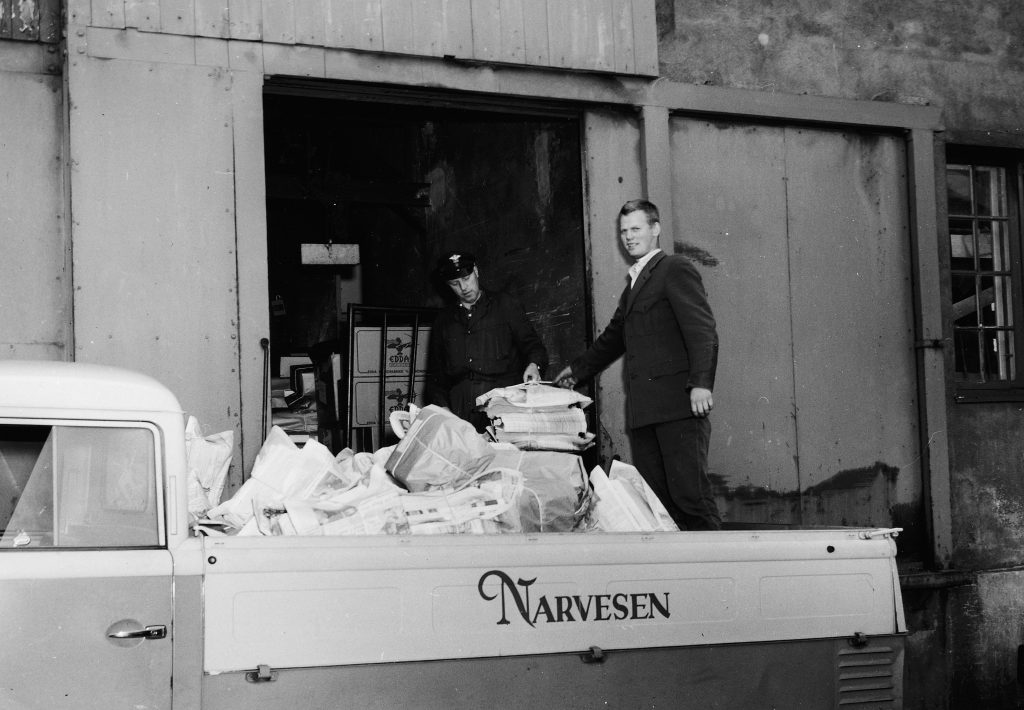Railway History at the Museum
Vestfold Museums invites you to a railway history seminar on 16 June at 12 noon. The seminar offers exciting railway history talks. It takes place in the exhibition “The Train of the Future”, which opened at the Ironworks museum in 2021. It was once a carpentry workshop, where Eidsfoss works made wooden parts for approximately 3,000 freight wagons in the period 1898-1968. There are several exciting talks this year. Bjørg Eva Aasen from the Norwegian Railway Museum comes to talk about the Narvesen kiosk company and the railway museum’s restoration of a kiosk from 1921. Bent Ek from the Eiker history team comes to talk about the Station town Vestfossen, and Fred Nordseth from the Gamle Eidsfoss foundation explains the history of the steamship Stadshauptmand Schwartz and the many years of work to raise and restore it. Welcome to a railway history day at Eidsfoss.

Foto: Norwegian Railway Museum. Taken by Mittet foto AS.
Program
12-12.45pm: Bjørg Eva Aasen, Norwegian Railway Museum, Hamar: “Narvesen’s newspaper kiosk from 1921 – how and why to restore?”
Kl. 1.00-1.30pm: Museum Association Vestfold privatbaner: «Restoring a Narvesen Kiosk».
1:30-2.30pm: Bent Ek, Eiker history association: “Vestfossen – the station town by the Eiker”
2:30-3:30pm: Fred Nordseth: “The steamship Stadshauptmand Schwartz’s time at Eikern” After the talk we will get a tour of the boat at Kølabånn.
Restoration of a Narvesen newsstand from 1921
Bjørg Eva Aasen from the Norwegian Railway Museum in Hamar gives a talk about the history behind the Narvesen newsstand, which the Norwegian Railway Museum received in autumn 2017, and how the kiosk has been restored, so that today it is a beautiful attraction at the Norwegian Railway Museum in Hamar. The Narvesen kiosk company is an exciting piece of Norwegian history, which is intertwined with railway history. Bertrand Narvesen (1860-1939) founded the company in 1894 for the sale of reading material for travelers on the railways in Eastern Norway. Narvesen became a nationwide company, which sold a number of goods. The company also started the foundation Fritt ord. Aasen is a trained ethnologist and chief curator at the Norwegian Railway Museum. She has worked to lift the railway history off the track and show its social relevance and the importance of a well-developed transport system for the country economically, technically, socially and geographically.
Vestfossen – the station town at Eikeren
Vestfossen became a station town on 10 November 1871, when the railway between Hokksund and Kongsberg opened. At that time, Vestfossen was already a several hundred-year-old industrial site, but the railway enabled the site to continue to develop into the age of the wood processing industry and survive as a settlement. At the same time, Vestfossen was an important hub for traffic further south along Eikeren to Eidsfoss. Bent Ek is a historian that has worked in this capacity full-time for 30 years both as a freelancer and as manager of Eiker Archive and cultural heritage protection advisor in Øvre Eiker municipality. He has written several books, mainly about business and local history in Eiker.
The steamship Stadshauptmand Schwartz’s time at Eikern
Fred Nordseth, head of the Foundation for the Preservation of Cultural Heritage and the Environment at Gamle Eidsfoss, has been central in the preservation of historical buildings at Eidsfoss since the 1970s. That includes the restoration of the steamship Stadshauptmand Schwartz. The steamship sank while being docked in the late 1930s, and after two failed attempts in the 1930s and 1970s, Nordseth and a group of enthusiasts managed to raise the boat in 1995. The event was broadcast on the national television channel NRK and hundreds of people turned up. Nordseth will tell us more about the boat’s journey from being “Eikern’s white swan” to now, after almost 30 years of hard work, appearing as a cultural monument on land. After the talk, he takes us to look at the boat.


